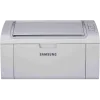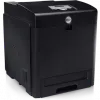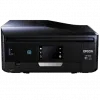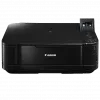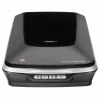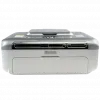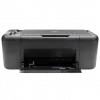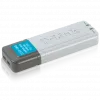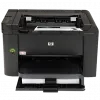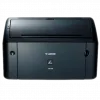Mac OS X Leopard (version 10.5) is the sixth major release of Mac OS X, Apple's desktop and server operating system for Macintosh computers. Leopard was released on 26 October 2007 as the successor of Tiger (version 10.4), and is available in two variants: a desktop version suitable for personal computers, and a server version, Mac OS X Server. Leopard was superseded by Snow Leopard (version 10.6). Leopard is the final version of Mac OS X to support the PowerPC architecture as Snow Leopard functions solely on Intel based Macs.
According to Apple, Leopard contains over 300 changes and enhancements over its predecessor, Mac OS X Tiger, covering core operating system components as well as included applications and developer tools. Leopard introduces a significantly revised desktop, with a redesigned Dock, Stacks, a semitransparent menu bar, and an updated Finder that incorporates the Cover Flow visual navigation interface first seen in iTunes. Other notable features include support for writing 64-bit graphical user interface applications, an automated backup utility called Time Machine, support for Spotlight searches across multiple machines, and the inclusion of Front Row and Photo Booth, which were previously included with only some Mac models.
Apple missed Leopard's release time frame as originally announced by Apple's CEO Steve Jobs. When first discussed in June 2005, Jobs had stated that Apple intended to release Leopard at the end of 2006 or early 2007. A year later, this was amended to Spring 2007; however on 12 April 2007, Apple issued a statement that its release would be delayed until October 2007 because of the development of the iPhone.
Apple states the following basic Leopard system requirements, although, for some specific applications and actions (such as iChat backdrops) an Intel processor is required:
- Processor must be any Intel, PowerPC G5 or G4 (867 MHz and faster)
- DVD drive (for installation of the operating system)
- At least 512 MB of RAM (additional RAM (1 GB) is recommended for development purposes)
- At least 9 GB of disk space available.
Leopard’s retail version was not released in separate versions for each type of processor, but instead consisted of one universal release that could run on both PowerPC and Intel processors. However, the install discs that ship with Intel-based Macs only contain Intel binaries.
Processor type and speed are checked during installation and installation halted if insufficient; however, Leopard will run on slower G4 processor machines (e.g., a 733mhz Quicksilver) if the installation is performed on a supported Mac and its hard-drive then moved to a slower/unsupported one (the drive may either be an internal mechanism or a Firewire external).
Supported machines
Leopard can run on the later flat panel iMac G4s, the first iMac G5, second iMac G5 (with the ambient light sensor), third iMac G5 (with iSight), iMac Intel Core Duo and (present day) iMac Intel Core 2 Duo, PowerBook G4, Power Mac G4, Power Mac G5, iBook G4, MacBook, MacBook Pro, MacBook Air, Mac Pro, Mac Mini, Xserve, Xserve G5, Xserve RAID, Macintosh Server G4, and later eMac models. Leopard can run on older hardware as long as they have a G4 upgrade installed running at the 867 MHz or faster, have at least 9 GB free of hard drive space, 512 MB RAM and have a DVD drive. Leopard however will not run on the 900 MHz iBook G3 models even though they exceed the minimum 867 MHz requirement. This is due to the lack of AltiVec in the G3 line of processors and the fact that most pre-G4 and early G4 systems do not have video hardware capable of supporting Core Image, two technologies Leopard relies upon heavily, among others. Leopard can be "hacked" (see below) to install on these G3 and pre-867 MHz G4 machines but the system may behave erratically and many of the programs, features, and functions may not work properly or at all. As of Mid 2010, some Apple computers have firmware factory installed which will no longer allow installation of Mac OS X Leopard. These computers only allow installation and running of Mac OS X Snow Leopard. However, some computers (such as the 2011 model of the Mac mini) can have Leopard installed on them without hacking.
